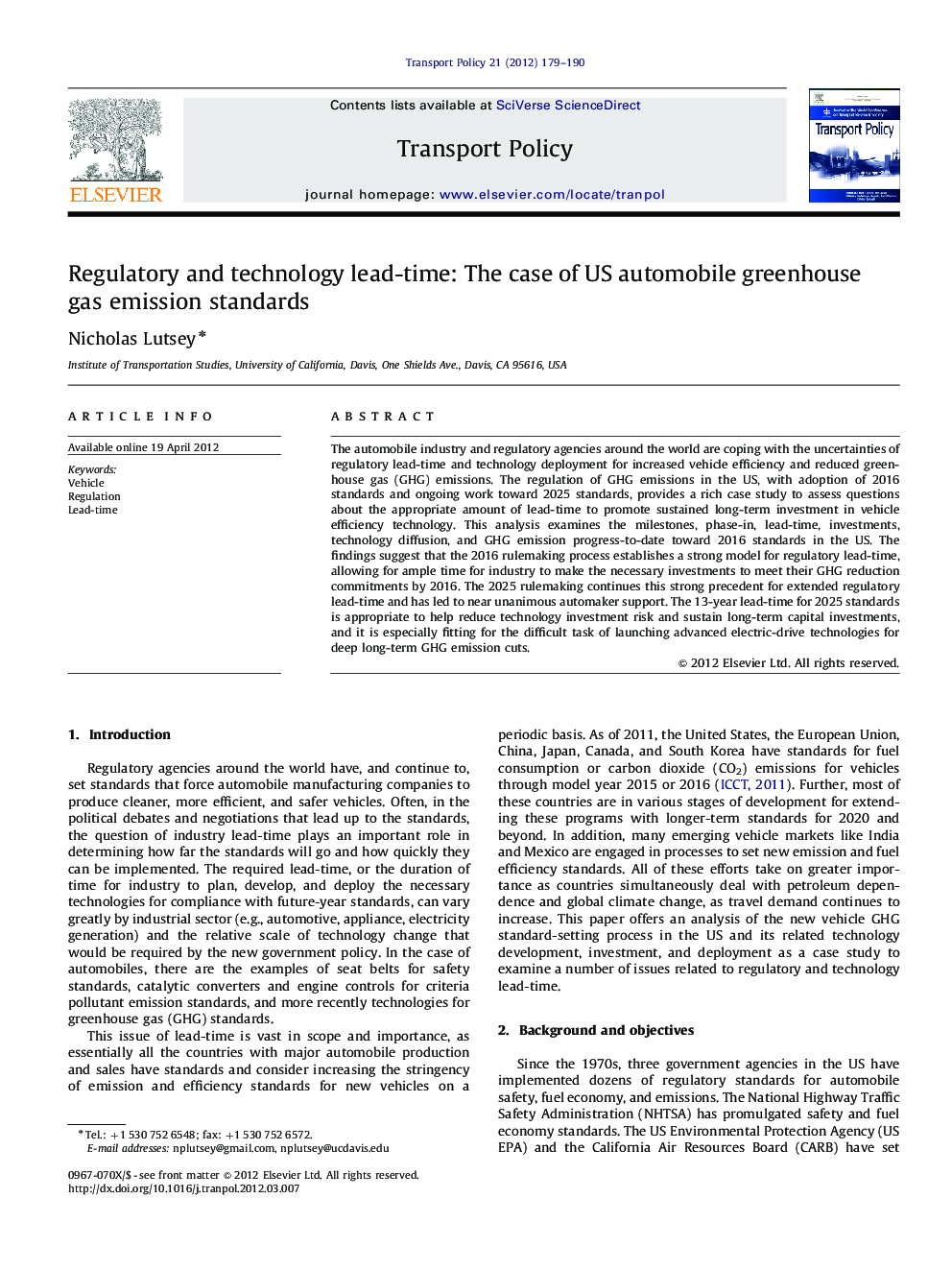| Article ID | Journal | Published Year | Pages | File Type |
|---|---|---|---|---|
| 1065197 | Transport Policy | 2012 | 12 Pages |
The automobile industry and regulatory agencies around the world are coping with the uncertainties of regulatory lead-time and technology deployment for increased vehicle efficiency and reduced greenhouse gas (GHG) emissions. The regulation of GHG emissions in the US, with adoption of 2016 standards and ongoing work toward 2025 standards, provides a rich case study to assess questions about the appropriate amount of lead-time to promote sustained long-term investment in vehicle efficiency technology. This analysis examines the milestones, phase-in, lead-time, investments, technology diffusion, and GHG emission progress-to-date toward 2016 standards in the US. The findings suggest that the 2016 rulemaking process establishes a strong model for regulatory lead-time, allowing for ample time for industry to make the necessary investments to meet their GHG reduction commitments by 2016. The 2025 rulemaking continues this strong precedent for extended regulatory lead-time and has led to near unanimous automaker support. The 13-year lead-time for 2025 standards is appropriate to help reduce technology investment risk and sustain long-term capital investments, and it is especially fitting for the difficult task of launching advanced electric-drive technologies for deep long-term GHG emission cuts.
Graphical abstractFigure optionsDownload full-size imageDownload as PowerPoint slideHighlights►Novel investigation of regulatory lead-time, technology investment for CO2 standards. ►Automakers have already made substantial progress (40%) toward 2016 US CO2 rules. ►New 2025 standards offer improved regulatory, legal, and investment certainty. ►Lead-time grows in importance for electric vehicles and climate stabilization goals. ►US CO2 standards set new precedent for lead-time to follow in future and globally.
